B2B case studies — when they’re done right — take your audience through a detailed success story that shows what your business can do in practical, relatable terms. Essentially, you’re combining concrete evidence and convincing social proof, helping potential customers see why your service is right for them too.
But for plenty of people working in B2B marketing, the process of creating case study content is actually overwhelming.
- You might have to work with an internal team that’s dealing with a backlog of projects they see as more urgent.
- You might have to outsource the case study to an agency, which can be incredibly expensive.
- You might try to write the case study yourself, which means you’re the one scheduling an interview with the client, analyzing the data, and trying to combine your sources into a coherent story.
In this post, we show you how to easily write your own B2B case study. It involves a combination of writing and video, which you can easily capture with our asynchronous video testimonial tool, Vocal Video.
We recommend using videos in your case study for two reasons. First, letting customers speak in their words helps make your case study more convincing. Second, using video expedites the writing process, as you don’t need to take interview notes and then write out a narrative around them. You can instead use the interviews themselves in your case study.
Before we walk you through how to use Vocal Video to create B2B case studies for your website and marketing channels, let’s cover some high-level tips to help you plan a fantastic case study.
How to Plan a Case Study That Converts
To get a case study that highlights your company’s key value propositions, you’ll need to do some preparation. Whether your goal is to create new pages for your website, showcase your big-name clients, or build authority and brand awareness in your niche, effective case studies start with a clear understanding of the value proposition you want to convey. Knowing your goal will help you choose which clients to interview, decide the questions you want to ask them, structure the finished case study, and identify areas where you can track down data or statistics to make your case study more compelling.
Ideally, you’d think these tips over before you interview your client about their experience. But if you’re building your case study from a recorded review or a written testimonial, don’t worry. This process will still help you to pinpoint the most effective quotes to use.
Start with the Pain Points Your Product Aims to Solve
Case studies are an excellent way to attract prospective clients because they show you understand — and have a proven track record of solving — the same problems they’re facing today.
Understanding your customers’ pain points will help you make some important decisions early on in the process, including…
- Deciding which customer success stories most effectively show how you solve those pain points.
- Choosing which of your value propositions to highlight in the case study.
For example, look at this case study from FreshBooks:
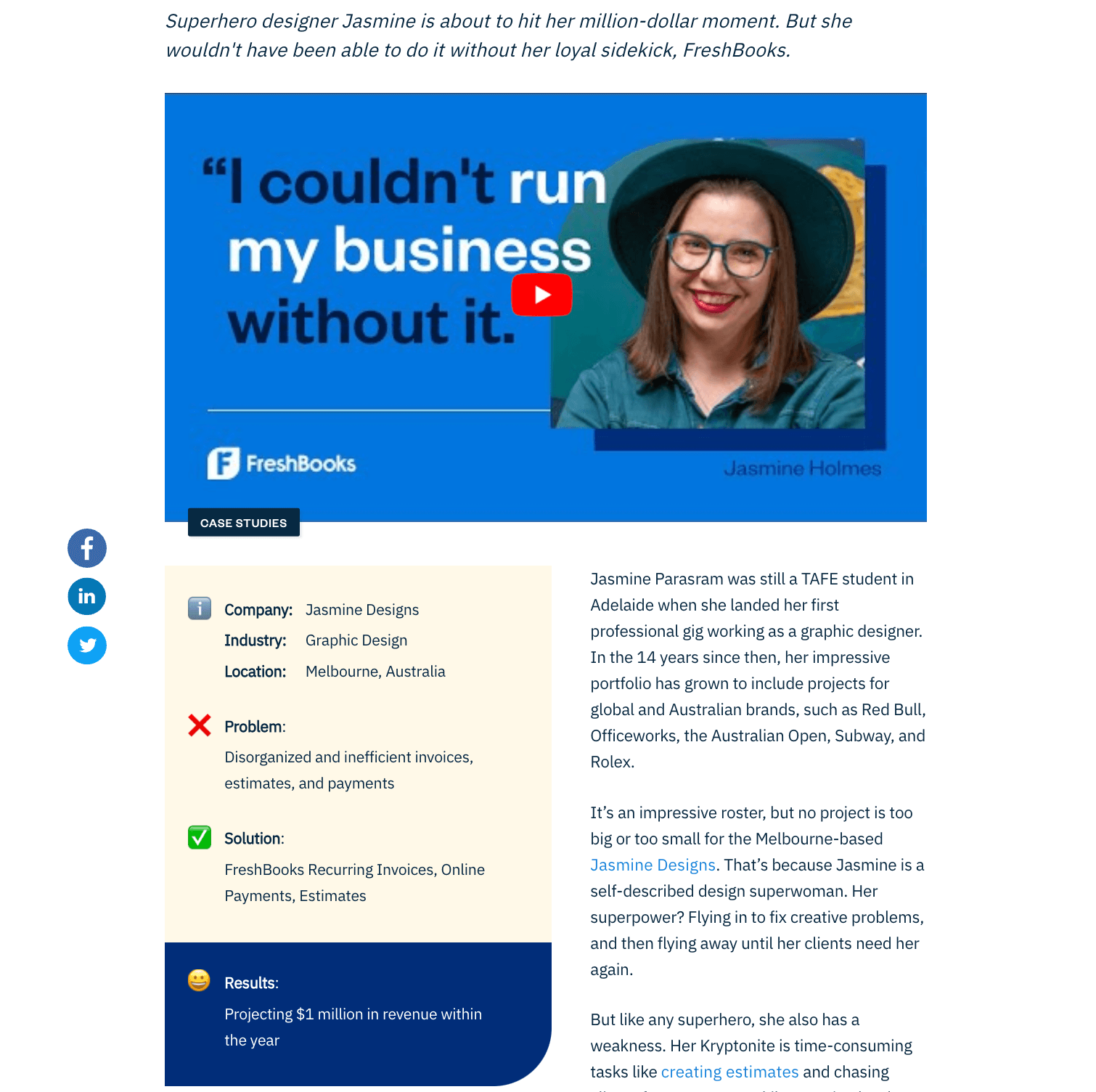
This written case study is based on how the company solved a problem that many business owners have (disorganized and inefficient invoices, estimates, and payments). In fact, showing the company understands this relatable pain point is so central to the success of this case study that it’s highlighted in the first paragraphs of the text and the scannable executive summary.
Identifying a problem that’s truly frustrating your customers, or even holding them back from success, can make them feel seen and understood. This creates a connection early on in the case study and keeps them reading to find out if the solution you’re offering would work for them too.
Plus, when you clearly understand the problem and solution, you can write a concise, focused case study that leaves the reader with a deeper understanding of what you have to offer. For example, writing a collection of case studies, each speaking to one of your company’s key value props, might convert more potential customers than one long winded, disorganized case study where you try to speak about four different features of your product in detail.
Understand the Three-Act Structure of a Great Case Study
With case studies, you have the chance to create a piece of content that’s longer than the rest of your B2B marketing copy. In contrast to the bullet points and short paragraphs you might use on a landing page, for example, case studies can tell a compelling story that wins the reader (hopefully a B2B buyer) over. Here, you have the chance to write about a client’s unique experience and include anecdotes alongside official statistics. Because the decision-making process is emotional as well as logical — even in B2B — the storytelling aspect of case studies can be a huge advantage.
Many of the most successful case studies follow what’s called a three-act structure. This presents your client as the hero and your company as the tool that helped them reach their goals.
A three-act case study:
- Explains the ways they were being held back before they started working with your company.
- Describes how they discovered your company and what it was like during the process of working with you.
- Explains the results they saw immediately after working with you, and ideally the long-term benefits or growth they’re still seeing today.
For example, Vocal Video customer Optimizely made this video for our case study series:
After an introductory section that describes the product, Optimizely’s marketing manager MacKenna Anovick answers questions that cover all three of the bases we talked about above.
- Before: What challenges did you have creating video testimonials before Vocal Video?
- During: How is Optimizely using testimonial videos?
- After: What’s the ROI of video testimonials for Optimizely, and would you recommend others try Vocal Video?
The result is a case study that showcases the customer’s journey, engaging the viewer and helping them imagine themselves enjoying the same success.
You can read Optimizely’s full customer story here.
Choose Questions That Get Compelling Answers
Engaging case studies can bring your company’s value propositions down to earth. This is especially important in B2B and SaaS marketing, where services can sometimes seem quite abstract or difficult to explain without industry jargon. In contrast, a case study explains why what you’re offering matters, showing real-world applications and real results.
The key to getting case studies that do this confidently is to pay attention to the phrasing of the questions in your client interview. The best case study questions are…
- Open, so the reader or viewer never has the feeling that you’re leading the respondent or they’re reading from a script.
- Specific, so the respondent gives more detail about their experience than a simple yes or no.
- Detail-oriented, so the respondent also backs up what they’re saying with evidence.
For example, Moki publishes video clips from their customers on their case study page. They ask the schools that work with them about the impact of the product — a fairly neutral question. The respondents can then talk about any of the different positive effects they’ve seen. Every speaker has their own story to back up the claims about how effective the product is, and they can cite the data that Moki collects as concrete evidence.
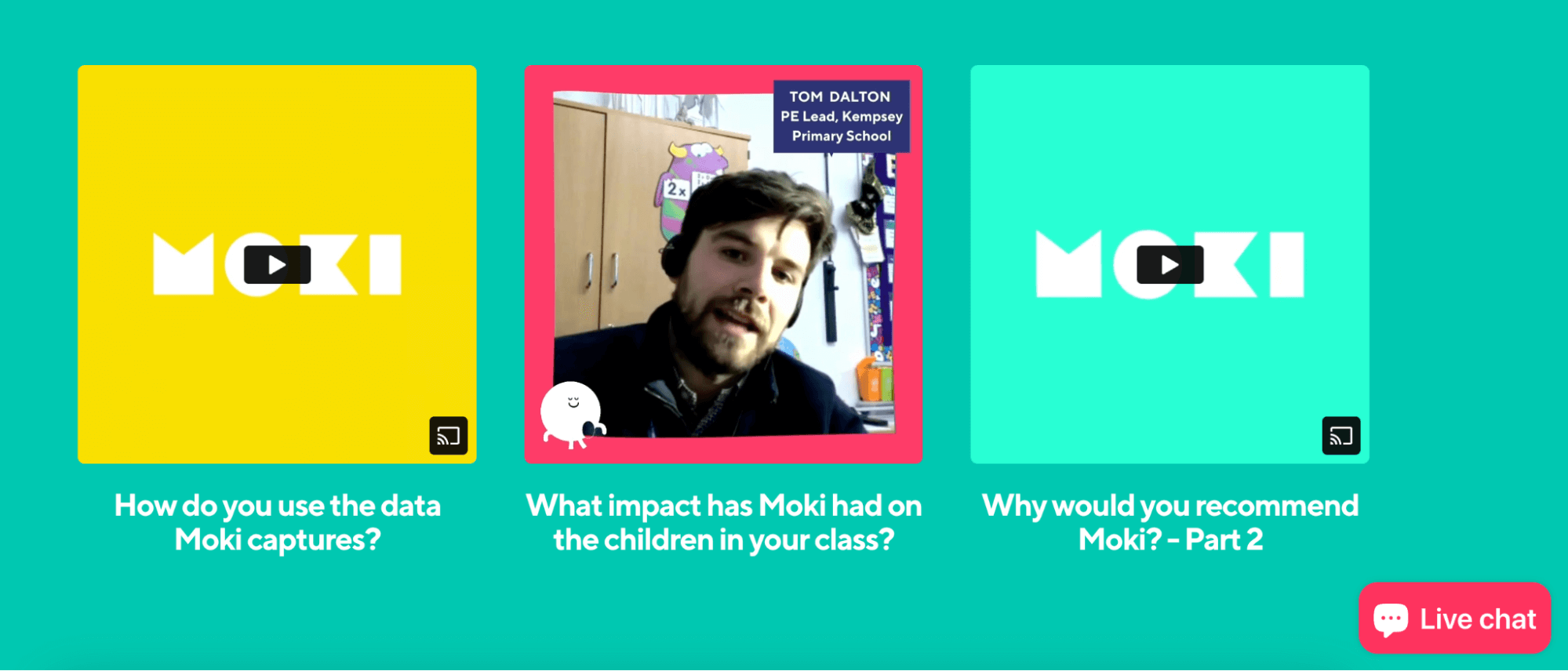
Plan to Collect Video Case Studies
Traditionally, B2B case studies have been presented as longer written content on a company’s website, but video case studies like the ones above are also an effective way to show what makes your company unique and prove the results you’ve brought in for your clients.
In comparison to written case studies, video is…
- Engaging, making a deeper connection with the viewer than text alone.
- Memorable, presenting the information in a way that’s easier to digest.
- Versatile, which makes it easier to repurpose your customer and client stories for social media, landing pages, and product pages.
With Vocal Video, it’s also fast, convenient, and affordable to create high-quality case study videos to share with your audience. Just create an asynchronous video interview collector to share with your clients, edit their responses, and publish the video to any of your channels. You can even use a template to speed up the process.
Vocal Video: The Easiest Way to Make an Impactful Video Cast Study
Almost ready to start creating video case studies? Here’s a quick guide to the Vocal Video process.
Make a Case Study Video Collector
Every Vocal Video case study starts with a video collector. This is what you’ll send to your customers so they can record their interview remotely whenever they have time.
You can write your collector welcome message, interview questions, and thank you from scratch, or customize our specially designed B2B Case Studies collector template to get started even faster.
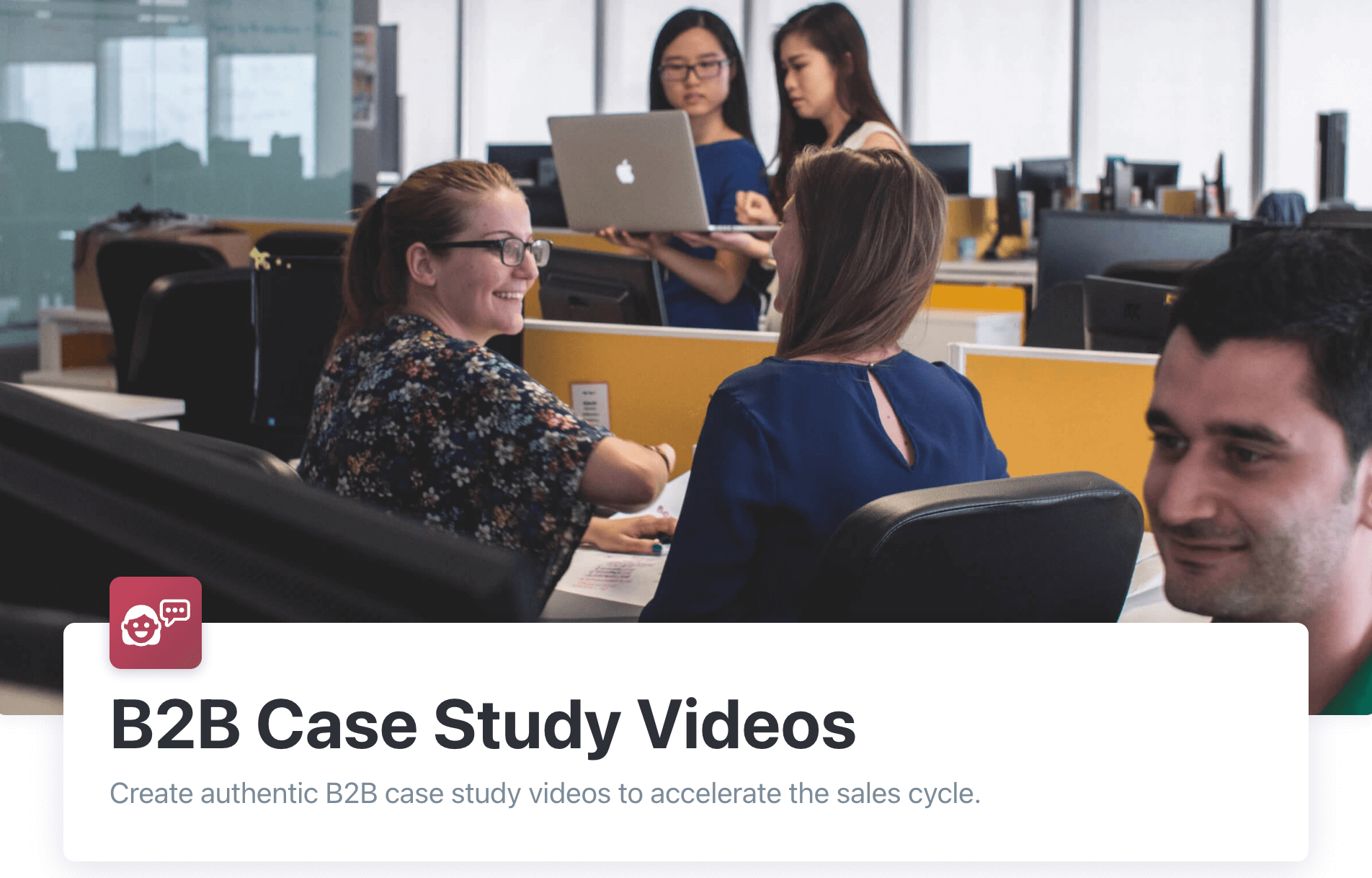
The B2B Case Study Video Template asks the respondent three questions:
- What problem was your organization dealing with before [your company]?
- How did [your company] help resolve this challenge?
- What results did you get with [your company]?
You can also add up to two more questions to ask for more details. For example, you might want your client to speak about the onboarding process, or to speak about the immediate results and the long-term benefits in separate answers. Simply select the template and customize the questions in the collector dashboard.
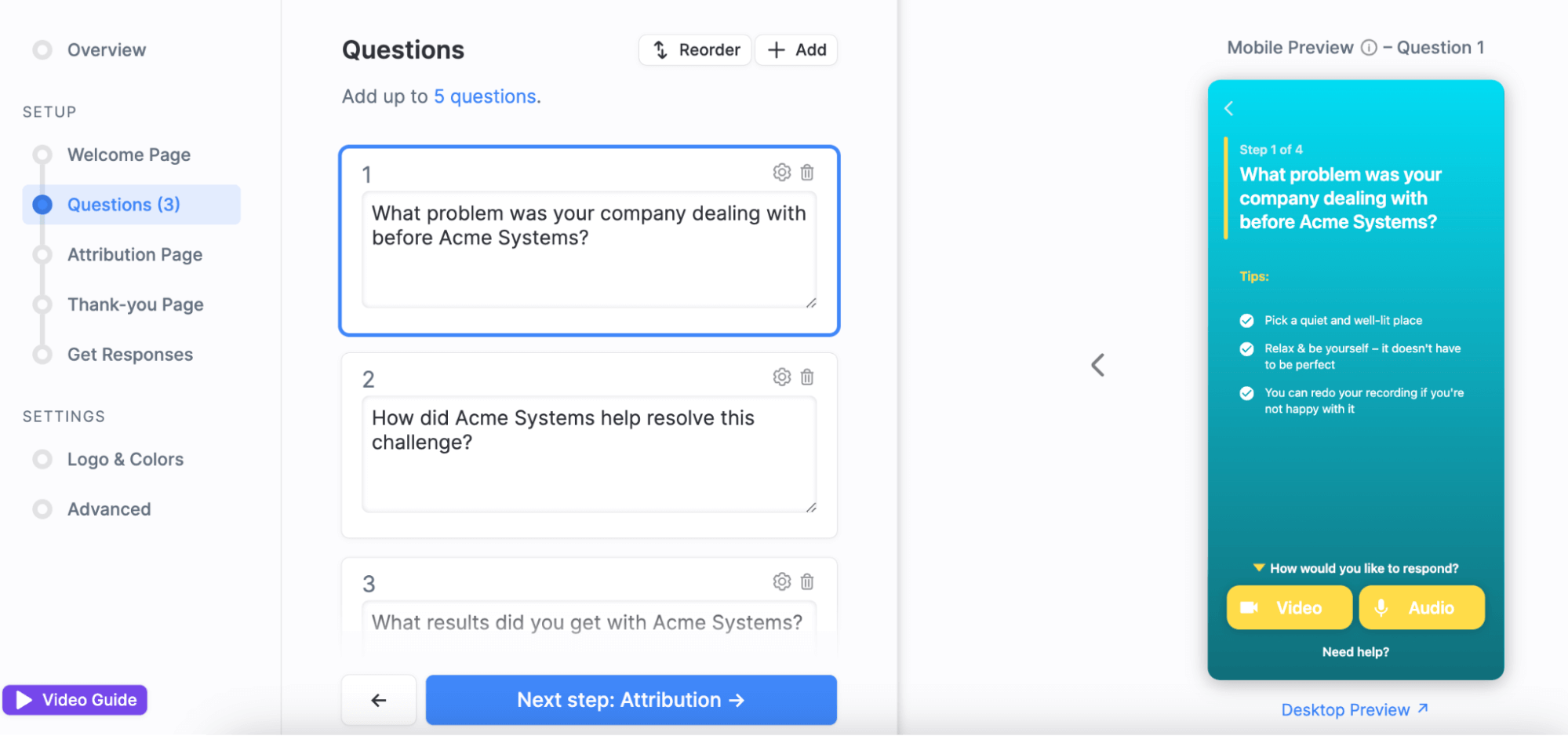
Find out about 3 more video case study templates here.
Send the Collector Link to Your Top Clients
You might already have a specific client in mind for a case study. In this case, the easiest way to collect customer quotes from them is to generate a link to your video collector and send it by email. You can even customize the URL and send them a personalized collector link with their details pre-filled.
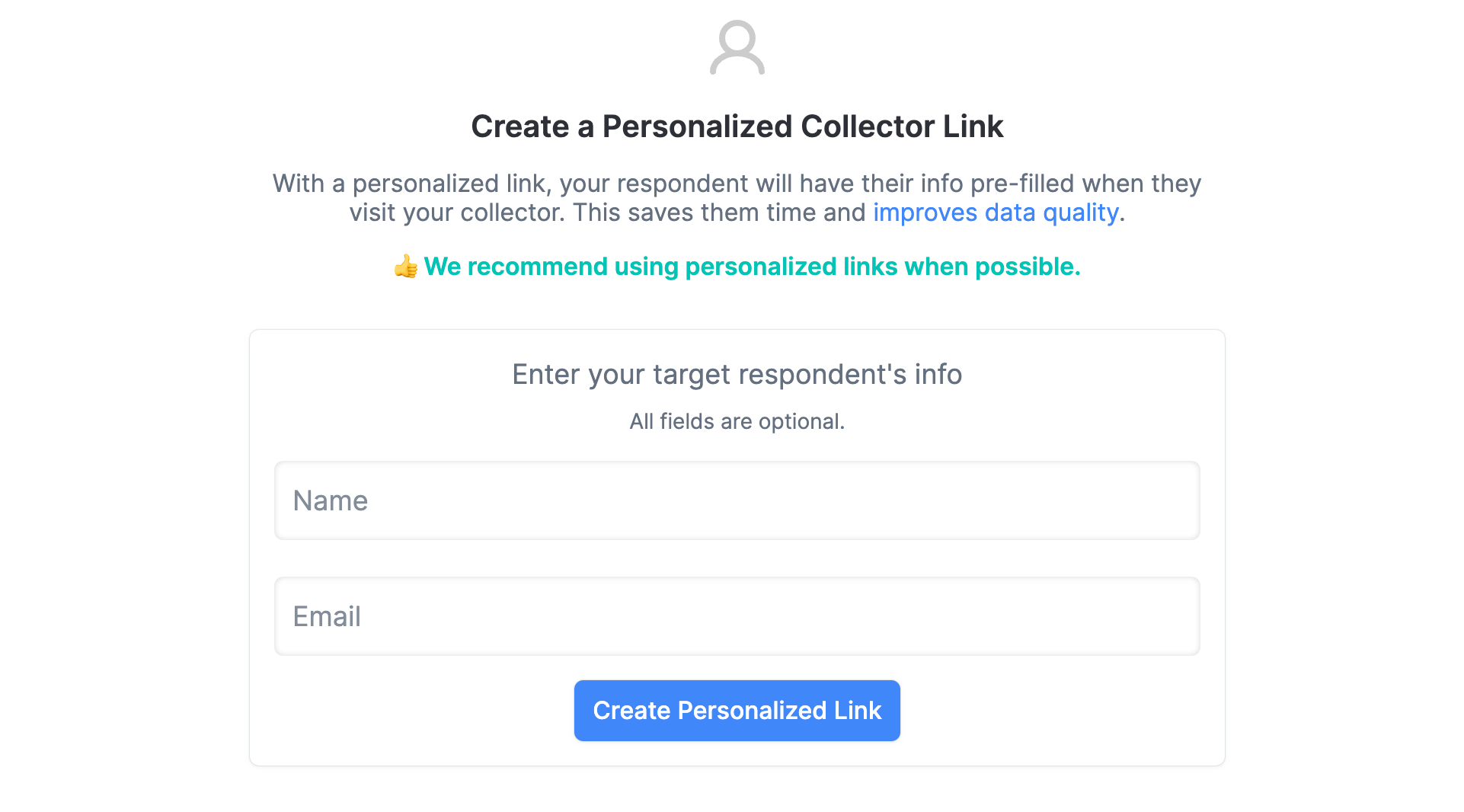
If you want to collect more case study videos, you can also invite more of your past clients to take part with our three-touch email sequence, which is proven to get more responses. In this case, you send a “pre-ask” email to your client list, saying you’d like to gather more case studies for your marketing efforts and explaining how Vocal Video works. Then, send an “invitation” with the collector link to the clients who say they’d be happy to take part. Finally, send a “reminder” message to the clients who haven’t found time to record yet.
Read more about how to ask for customer stories — including suggested texts for all three emails.
In every interaction with a potential interviewee, you can remind them of how easy it is to take part and how much you value their thoughts. Remember, with Vocal Video, they’ll be able to record their responses wherever they are, in as little as 5-10 minutes, and they can open the link to the video collector without downloading an app or setting up an account.
Get Automatically Edited Case Study Videos and Transcripts Sent to Your Library
Whenever a client records a response, our unique automatic editing process creates a seamless, high-quality video for your case study library. We’ll add…
- Attribution overlays with the speaker’s name and company name to add credibility to your case study.
- Subtitles to make your video more accessible to people watching without sound.
- Royalty-free music to set the tone.
- Eye-catching animated transitions between slides.
- Branded question cards showing the prompts your interviewee was responding to.
Automatic testimonial editing makes this highly-effective form of video marketing open to everyone. Even if you’ve never been involved in video production before, you’ll be able to create an attention-grabbing, professional, compelling case study to share as part of your content marketing strategy. And, if you need to make any tweaks, our suite of intuitive, drag-and-drop editing tools makes it easy to…
- Change the order of the slides in the video.
- Trim the respondent’s answers.
- Edit the subtitles, for example, to remove pauses or correct the spelling of a product name.
- Include a call to action (CTA) inviting viewers to book a consultation, get a demo, or find out more about your company.
- Add additional slides to give more detail or context — such as a slide showing data that proves the results, screenshots showing the tools the respondent is talking about, infographics, an introductory message from your company, or responses from more people on your client’s team.
You can see our editing features in action in the video below from the marketing company Demandbase. Jon Leiberman, VP of Content, explains how they use Vocal Video for employee stories and thought leadership:
Your case study transcript — which we’ll automatically generate for every video you publish — is also invaluable when you want to use case studies in digital marketing. For example, if your goal is to populate a section of your website with multiple case study pages, just copy and paste the transcript to act as the text for each page. We call this “two-for-one testimonial writing.” Just go to any published video in your Vocal Video library to copy or download the transcript.
Find out more about the benefits of testimonial transcripts for SEO.
Publish Your Case Studies Online
When you’re ready to share your client’s success story with people at an earlier stage of the buyer’s journey, just go to “Share” to see the options for sharing a published video.
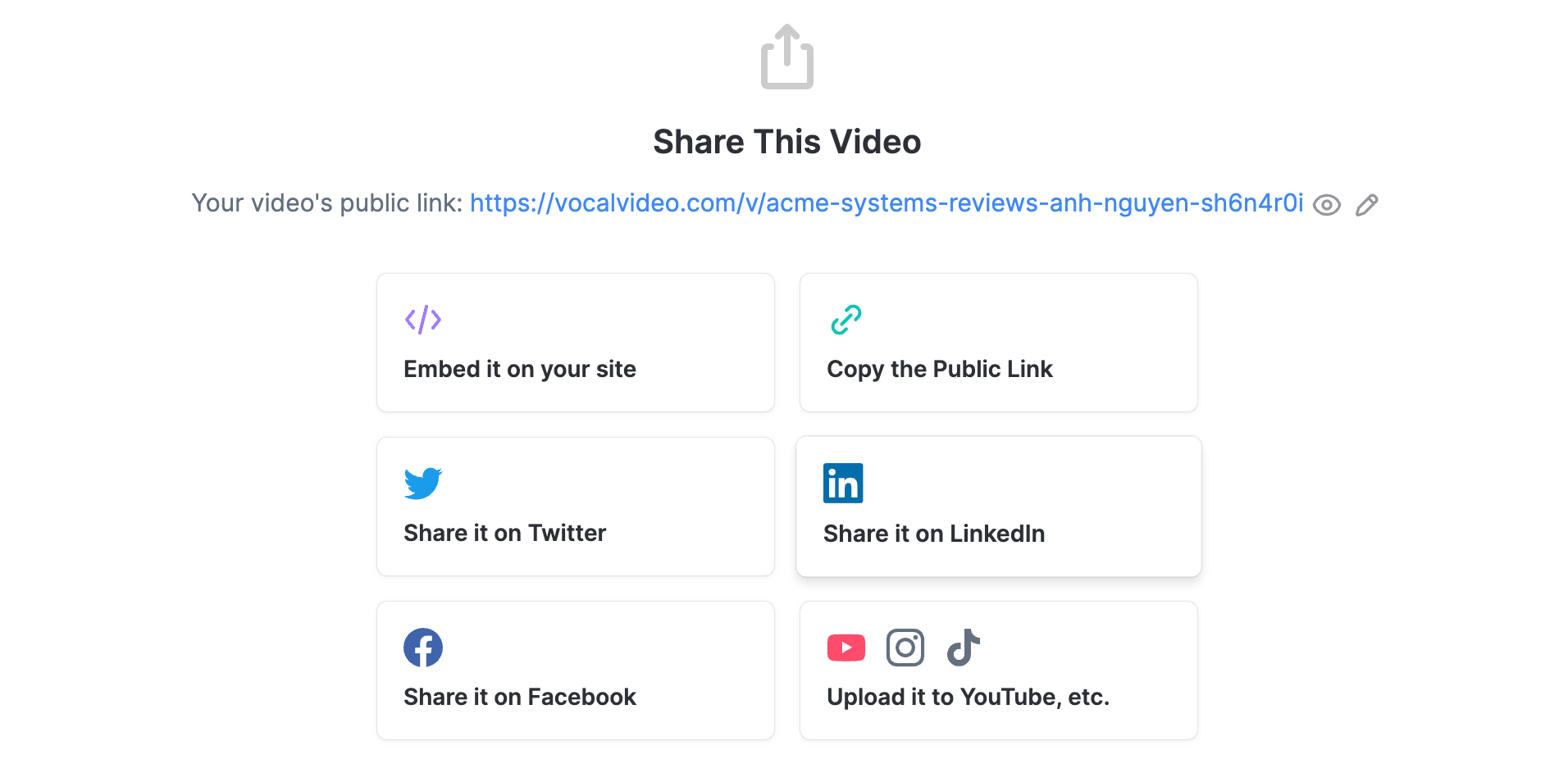
A B2B marketing team might be particularly interested in embedding the video on a case study webpage. To do this, just click “Embed it on your site.” We’ll take you through the steps to design and preview your embed, including…
- Choosing the shape of the embedded video.
- Picking a featured quote for an attention-grabbing video card.
- Changing the fonts and colors used in the video thumbnail.
- Previewing all the changes to your embed in real-time.
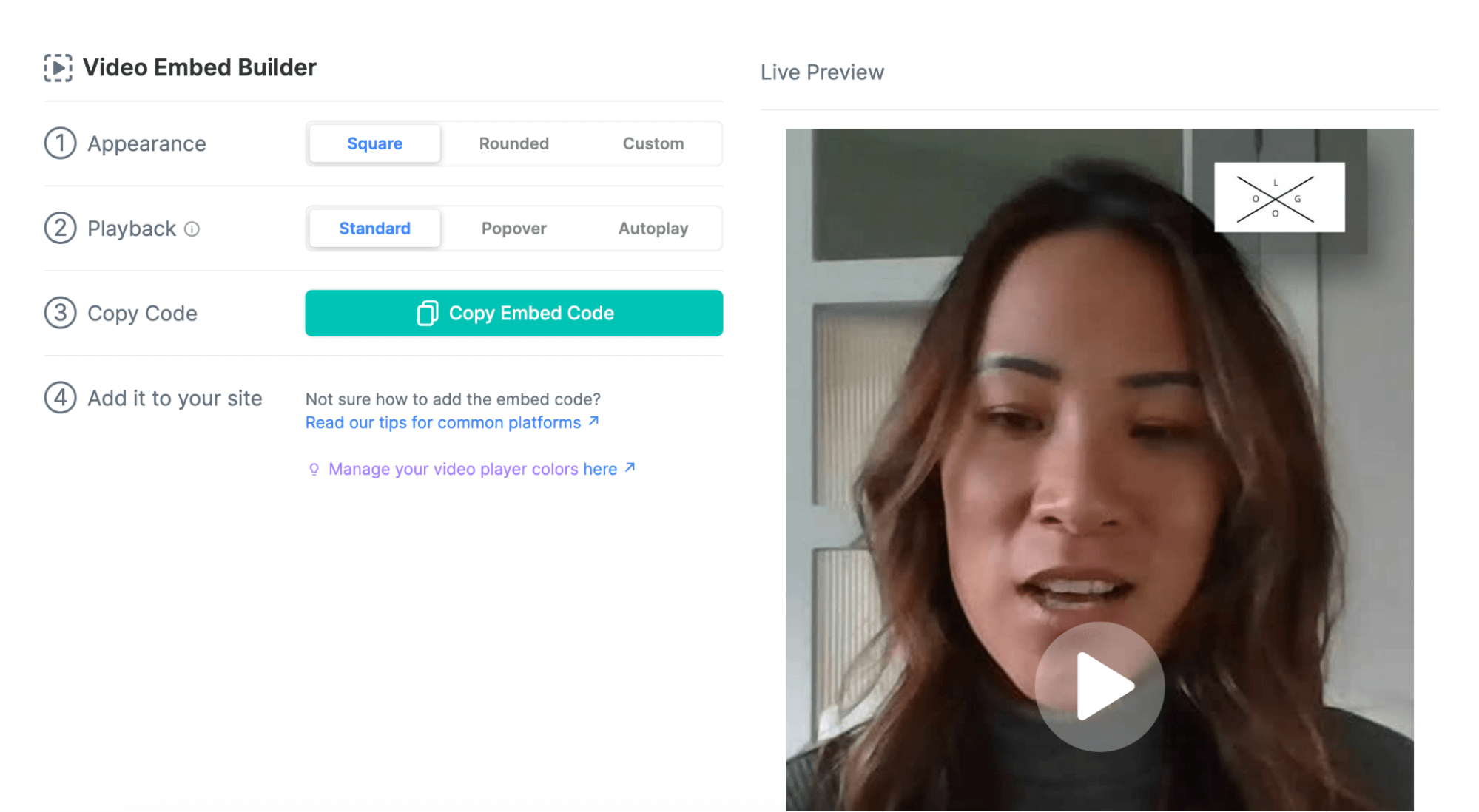
Then, just click “Copy embed code” to pick up the code snippet you need to add to your site. In site builders like WordPress, this is as simple as adding a new HTML block, pasting the code, and saving the changes.
Remember, video testimonials and transcripts are an extremely versatile resource for B2B content marketing. Unlike whitepapers or old-fashioned case study articles, case study videos — either alone or to support the written content — are extremely sharable. They’re just as at home on social media as in the testimonials section of your website, which makes them an invaluable resource when you want to touch base with your target audience on multiple channels.
3 Case Study Examples from Real Businesses
Now, let’s look at 3 examples of how Vocal Video customers publish B2B case studies to convert more potential customers.
SecurEnds: Video Case Studies and Testimonials Combined
SecurEnds dedicates a webpage to case studies and testimonials to help people find out more about their product.
These custom opening slides/thumbnails in this gallery are particularly strong. It creates content that sits comfortably with SecurEnds’ branding, but also puts their customers front and center. In the caption, they highlight the name and position of the respondent for authority, and explain how that customer used SecurEnds. This makes it easy for new customers to find the case study to address the pain points they’re also facing.
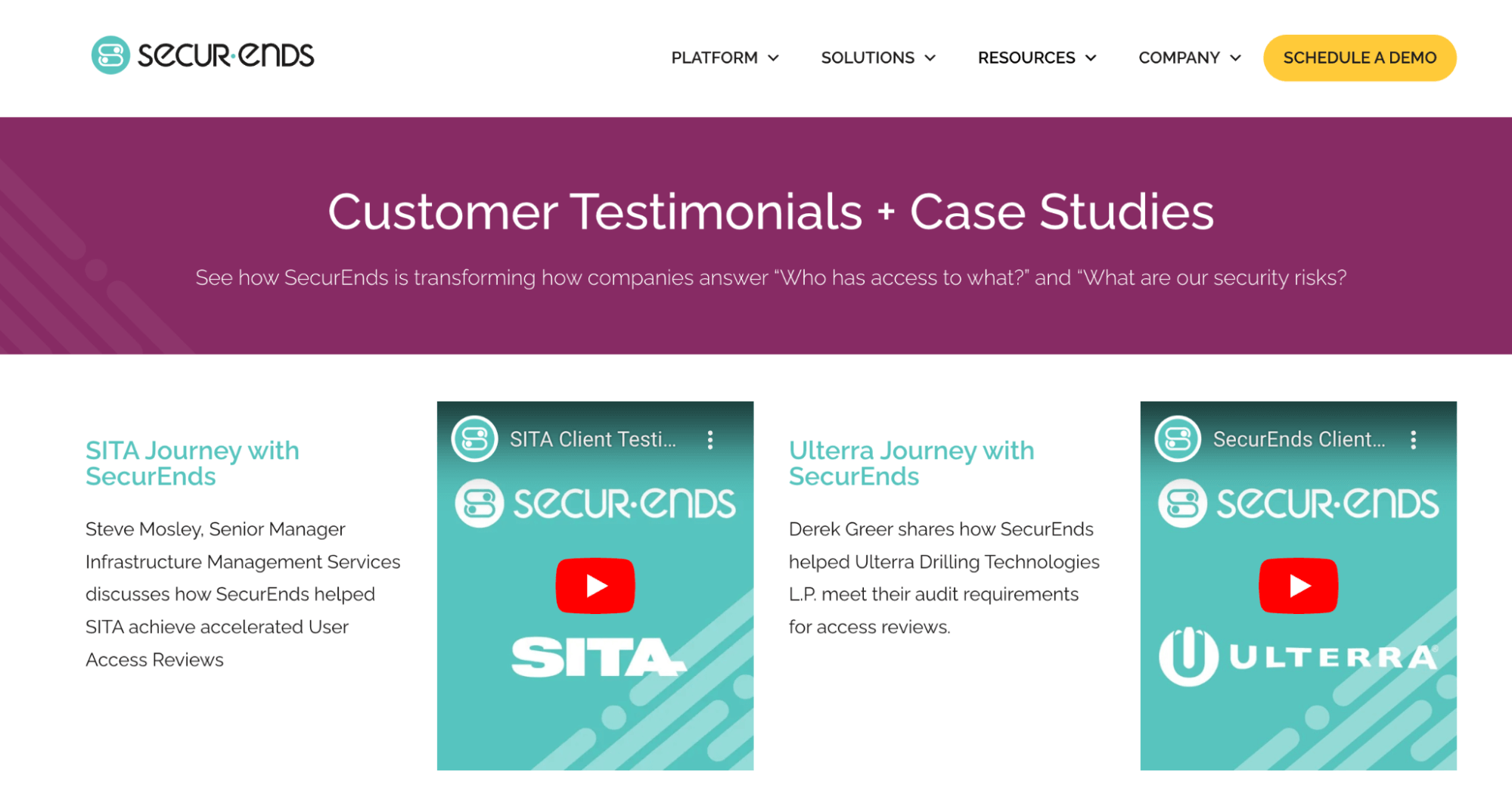
Securends used YouTube embeds for this case study gallery. Find out more about how to build a testimonial gallery within Vocal Video — including interactive examples of five different gallery formats — here.
Atlas Cloud: Case Study Transcripts as Articles
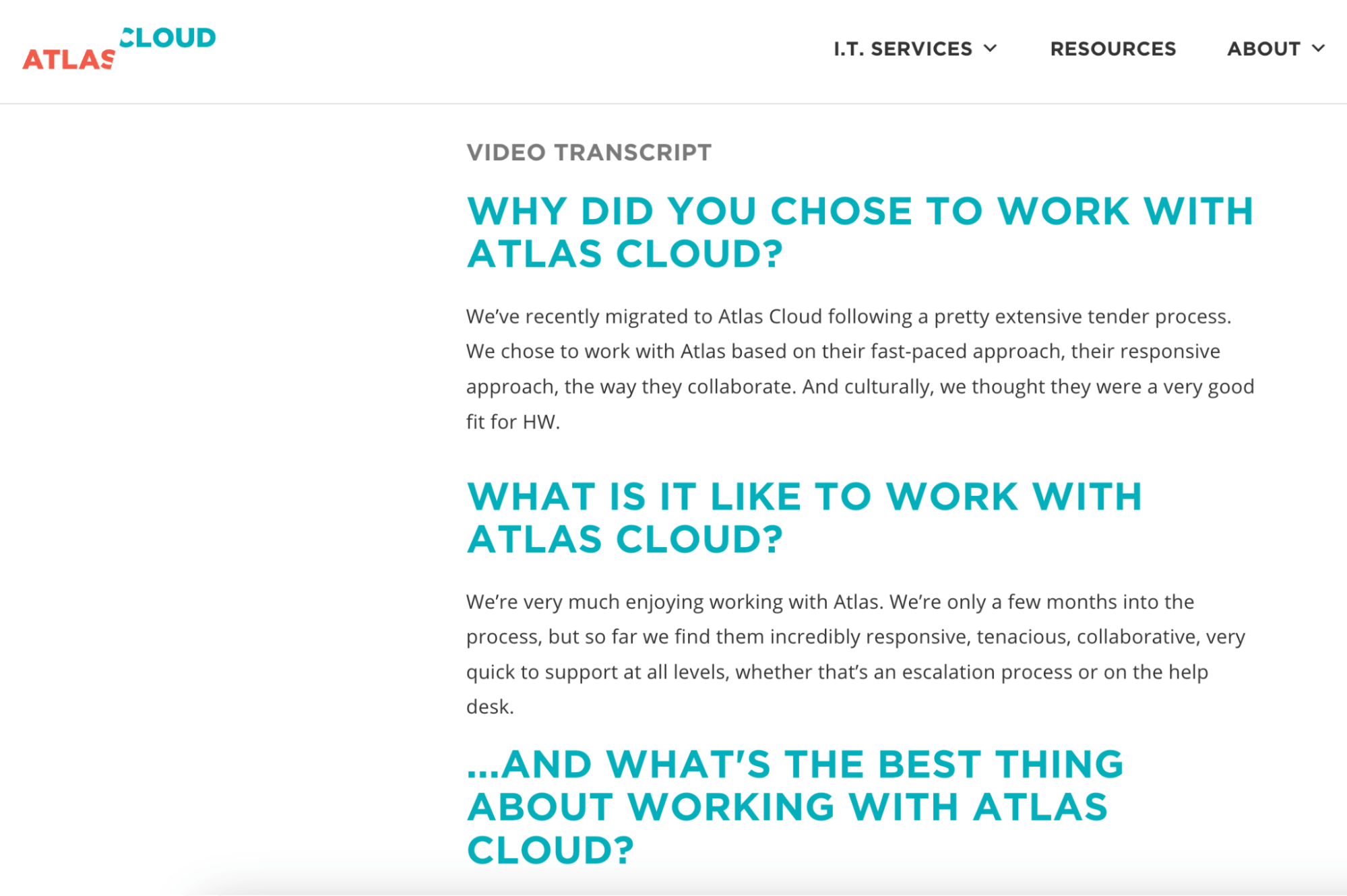
Atlas Cloud creates more content for the case study page of their website by publishing the video and the transcript together. In the articles, they include the video and the transcript, so they can appeal to people who can stop and watch a video during their research, and people who need to scan the text for the key information. Plus, by formatting the questions from the interview as headings, they’ve also continued to use their brand colors throughout the article.
The Product Led Alliance: Sharing Case Studies on LinkedIn and Twitter
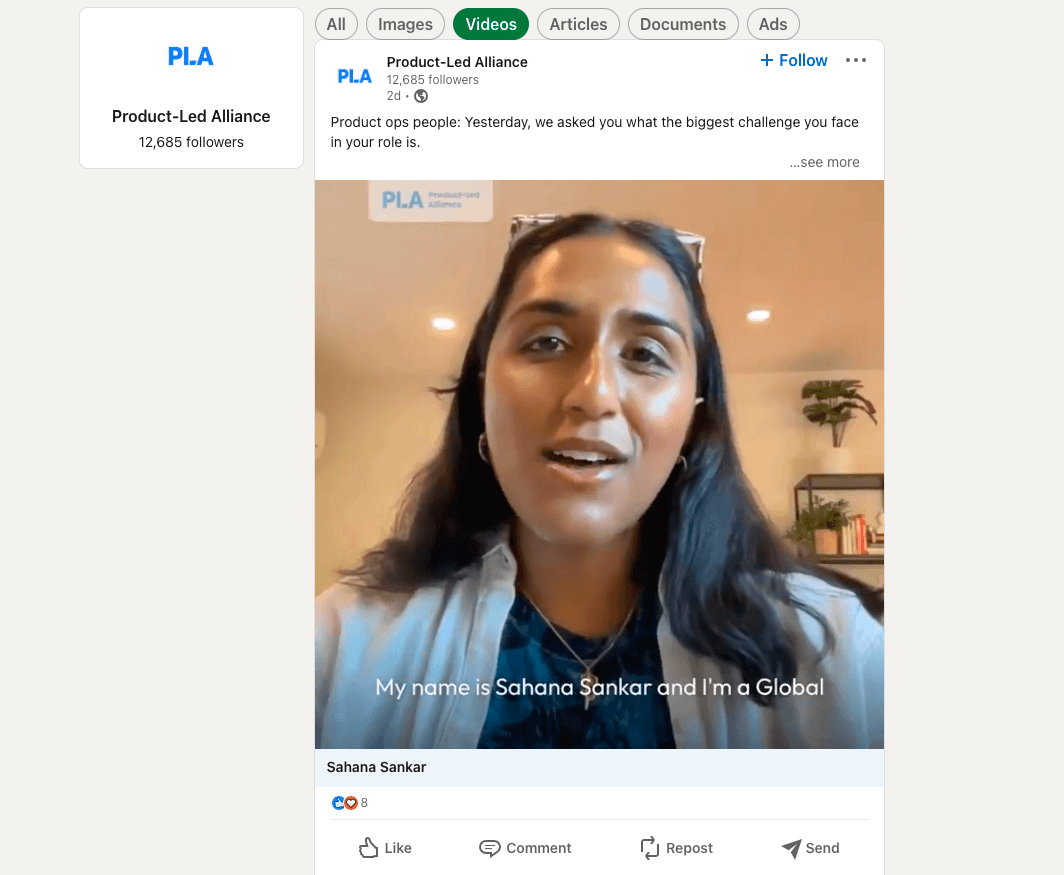
The Product Led Alliance recognizes that LinkedIn is an important platform for attracting new B2B customers. They use their profile (and their Vocal Video interviews) to talk about common challenges in their industry and present their solutions. Plus, because video is more shareable than a traditional written case study, their followers are more likely to repost the content and put it in front of more potential clients.
Create Case Studies the Easy Way, with Vocal Video
There are no rules about the structure or format your content has to follow to be considered an “official” case study. As long as you understand the customer’s pain point, present your solution, and prove the results your company can get, you’ll have a B2B marketing resource that shows the real-world benefits of working with you.
Plus, when you use Vocal Video to collect video interviews from your clients, you get dynamic, shareable, relatable content to supplement your written case studies or act as the basis for a whole case study page on your website.
Sign up for Vocal Video today and create your first case study video collector for free.